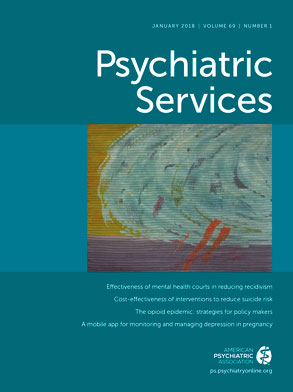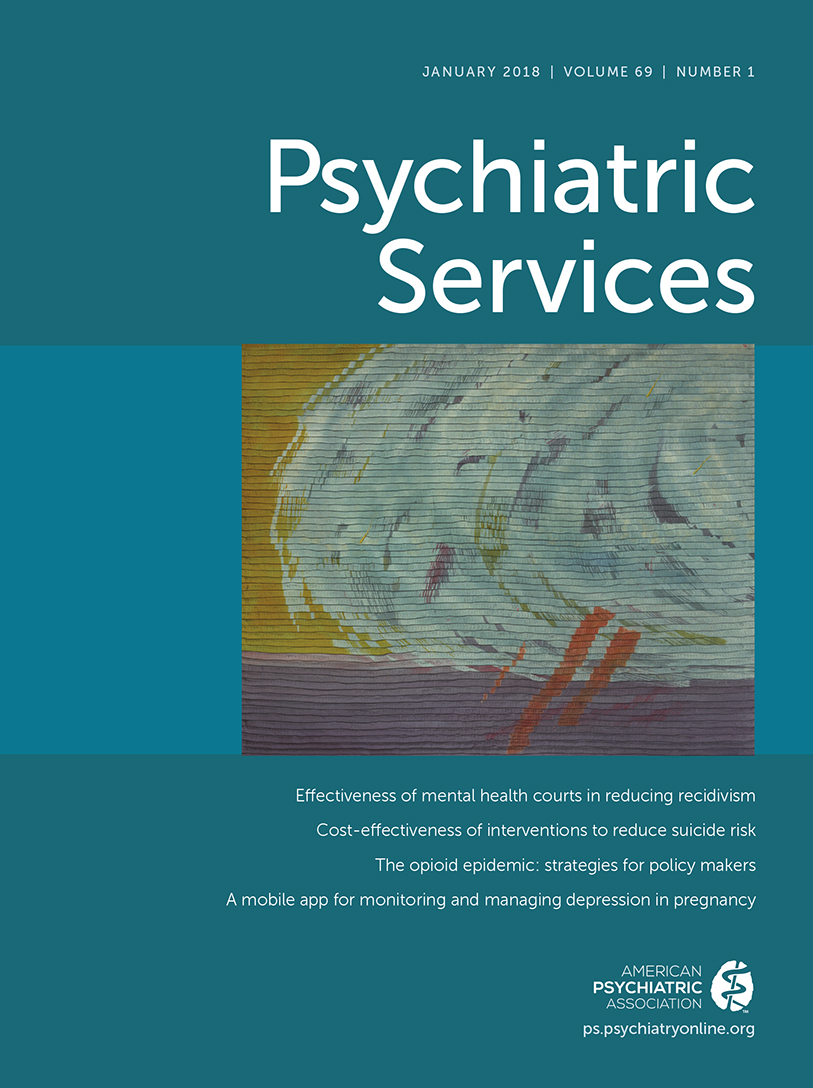Prevalence of Serious Emotional Disturbance Among U.S. Children: A Meta-Analysis
Abstract
Objective:
Methods:
Results:
Conclusions:
Methods
Data Sources, Study Selection, and Inclusion Criteria
Data Extraction and Coding
Data Synthesis
Results
Study Pool
| Domain-specific impairment | Global impairment | |||||||||||
|---|---|---|---|---|---|---|---|---|---|---|---|---|
| Study title or identifier | Authors | Time frame | Representativeness (geographic region) | Age range | Evaluated sample size (N) | Sampling frame | Diagnostic system | Diagnostic measure and algorithm | Measure and criteria | Prevalance (%) | Measure and criteria | Prevalance (%) |
| Medical Expenditure Panel Survey (MEPS) | Olfson et al., 2015 (1) | Present | National | 6–17 | 18,865 | Households | Quantitative (CIS) | CIS cut score; parent only | CIS score ≥16 | 10.7 | CIS score ≥20 | 6.2 |
| National Health Interview Survey (NHIS) | Bourdon et al., 2005 (14) | 6 months | National | 4–17 | 9,878 | Households | Quantitative (SDQ) | SDQ symptom items; cut score varies by diagnosis; parent only | SDQ impairment items; cut score varies by diagnosis (≥2 or ≥3) | 7.1 | ||
| National Comorbidity Survey Replication–Adolescent Supplement (NCS-A) | Kessler et al., 2012 (13); Kessler et al., 2012 (35); and Kessler et al., 2009 (34) | 12 months | National | 13–17 | 6,483 | Dual frame (households and schools) | Taxonomic (DSM-IV) | CIDI; “or rule” (i.e., either parent or youth report) | Regression-based CGAS score approximation ≤50 | 8.0 | ||
| Houston | Roberts et al., 2007 (33) | 12 months | Regional | 11–17 | 4,175 | Households | Taxonomic (DSM-IV) | DISC-IV; youth only | DISC-specific impairment in ≥1 areas | 11.1 | ||
| National Health and Nutrition Examination Survey (NHANES) | Merikangas et al., 2010 (12) | 12 months | National | 8–15 | 3,042 | Households | Taxonomic (DSM-IV) | DISC-IV; varies by diagnosis | Study-specific questions; impairment in ≥1 areas | 11.3 | ||
| Oregon | Lewinsohn et al., 1993 (36) | Present | Regional | 14–18 | 1,710 | Schools | Taxonomic (DSM-IV) | K-SADS; youth only | K-SADS–specific impairment in ≥1 areas | 7.8 | ||
| Methods for the Epidemiology of Child and Adolescent Mental Disorders (MECA) | Shaffer et al., 1996 (37); Lahey et al., 1996 (38) | 6 months | Regional (Connecticut, Georgia, New York, and Puerto Rico) | 9–17 | 1,285 | Households | Taxonomic (DSM-IV) | DISC-2.3; “or rule” | CGAS score ≤60 | 11.5 | CGAS score ≤50 | 5.4 |
| Great Smoky Mountains Study (GSMS) | Costello et al., 1998 (11); Costello et al., 1996 (39); Costello et al., 1996 (40); Costello et al., 2003 (5); and Angold et al., 1999 (41) | 3 months | Regional (North Carolina) | 9–16 | 1,015 | Households | Taxonomic (DSM-IV) | CAPA; “or rule” | CAPA-specific impairment in ≥1 areas | 7.4 | CAPA-specific impairment in ≥2 areas | 6.8 |
| New York State | Costello et al., 1998 (11); Cohen et al., 1993 (42); and Velez et al., 1989 (43) | Present | Regional (Upstate New York) | 9–18 | 764 | Households | Taxonomic (DSM-IV) | DISC-1; “or rule” | Study-specific scales; bottom 10% on any 1 scale | 6.4 | Study-specific scales; bottom 10% on mean of all scales | 5.8 |
| Chicago | Lavigne et al., 1996 (32); Lavigne et al., 1993 (44) | Present | Regional | 2–5 | 510 | Households | Taxonomic (DSM-III-R) | DSM-III-R diagnosis based on 2 Ph.D.-level raters and battery of tests for preschool children; best estimate | CGAS score ≤60 | 9.1 | ||
| Boston | Costello et al., 1998 (11) and Reinherz et al., 1993 (45) | Present | Regional | 17–18 | 386 | Schools | Taxonomic (DSM-III-R) | DIS-III-R; youth only | Study-specific scales; bottom 10% on any 1 scale | 14.6 | Study-specific scales; bottom 10% on mean of all scales | 5.4 |
| Pittsburgh | Costello et al., 1999 (4); Costello et al., 1998 (11); and Costello, 1989 (46) | 12 months | Regional | 12–18 | 263 | Households | Taxonomic (DSM-III-R) | DISC-2.1; “or rule” | CGAS score ≤60 or CBCL social competence score in lowest 10% | 13.1 | CBCL social competence score in lowest 10% | 5.8 |
Prevalence of SED With Domain-Specific Impairment

| Moderator | B (%) | SE | 95% CI | p |
|---|---|---|---|---|
| Diagnostic approach | .775 | |||
| Taxonomic (reference) | 10.00 | .85 | 8.33 to 11.66 | |
| Quantitative | .71 | 2.46 | –4.12 to 5.53 | |
| Diagnostic time frame | .158 | |||
| <12 months (reference) | 9.42 | .82 | 7.81 to 11.03 | |
| 12 months | 2.19 | 1.55 | –.85 to 5.23 | |
| Representativeness of sample | .523 | |||
| Regional (reference) | 9.80 | .87 | 8.10 to 11.51 | |
| National | 1.18 | 1.84 | –2.43 to 4.78 | |
| Year of data collectionb | .237 | |||
| 1993 (mean year) | 10.10 | .71 | 8.72 to 11.49 | |
| Each additional year | .10 | .09 | –.07 to .28 | |
| Measure of impairment | .789 | |||
| CGAS (reference) | 11.01 | 1.67 | 7.74 to 14.28 | |
| Standardized normed scale | –.31 | 3.08 | –6.35 to 5.73 | |
| Study-specific scales | –.59 | 2.34 | –5.18 to 4.00 | |
| Questions from diagnostic interview | –2.17 | 2.28 | –6.63 to 2.29 | |
| Analyzed sample sizeb | .720 | |||
| 3,202 (mean N) | 10.10 | .79 | 8.55 to 11.65 | |
| Each additional youth | .00 | .00 | –.00 to .00 | |
| Sampling frame | .774 | |||
| Households (reference) | 9.97 | .88 | 8.24 to 11.70 | |
| Schools | .59 | 2.05 | –3.44 to 4.62 | |
| Informant | .855 | |||
| Caregiver or youth (reference) | 9.72 | 1.22 | 7.32 to 12.12 | |
| Caregiver only | .22 | 2.19 | –4.07 to 4.51 | |
| Youth only | 1.09 | 1.98 | –2.79 to 4.98 | |
| Diagnostic interview | .589 | |||
| DISC (reference) | 11.06 | 1.11 | 8.89 to 13.24 | |
| K-SADS | –3.25 | 2.77 | –8.68 to 2.19 | |
| Quantitative measure | –.36 | 2.70 | –5.65 to 4.92 | |
| DSM-III-R | –1.96 | 2.83 | –7.51 to 3.58 | |
| CAPA | –3.66 | 2.86 | –9.28 to 1.94 | |
| Age range (years) | .701 | |||
| <6 included (reference) | 9.94 | 1.81 | 6.41 to 13.48 | |
| 8–18 | –.36 | 2.15 | –4.58 to 3.85 | |
| ≥12 | 1.35 | 2.47 | –3.48 to 6.18 |
Prevalence of SED With Global Impairment

| Moderator | B (%) | SE | 95% CI | p |
|---|---|---|---|---|
| Diagnostic approach | .303 | |||
| Taxonomic (reference) | 6.02 | .44 | 5.15 to 6.88 | |
| Quantitative | .60 | .58 | –.54 to 1.74 | |
| Diagnostic time frame | .511 | |||
| <12 months (reference) | 6.29 | .32 | 5.67 to 6.91 | |
| 12 months | .71 | 1.08 | –1.41 to 2.83 | |
| Representativeness of sample | .112 | |||
| Regional (reference) | 5.79 | .46 | 4.90 to 6.68 | |
| National | .91 | .57 | –.21 to 2.03 | |
| Year of data collectionb | .354 | |||
| 1995 (mean year) | 6.22 | .35 | 5.54 to 6.91 | |
| Each additional year | .03 | .04 | –.04 to .10 | |
| Measure of impairment | .717 | |||
| CGAS (reference) | 6.07 | .71 | 4.70 to 7.47 | |
| Standardized normed scale | .49 | .82 | –1.12 to 2.11 | |
| Study-specific scales | –.03 | .96 | –1.92 to 1.85 | |
| Analyzed sample sizeb | .543 | |||
| 4,867 (mean N) | 6.23 | .38 | 5.48 to 6.97 | |
| Each additional youth | .00 | .00 | –.00 to .00 | |
| Sampling frame | .372 | |||
| Households (reference) | 6.33 | .32 | 5.71 to 6.95 | |
| Schools | –.93 | 1.29 | –3.46 to 1.61 | |
| Households and schools | 1.67 | 1.43 | –1.13 to 4.47 | |
| Informant | .534 | |||
| Caregiver or youth (reference) | 6.11 | .48 | 5.17 to 7.05 | |
| Caregiver only | .50 | .63 | –.72 to 1.73 | |
| Youth only | –.71 | 1.35 | –3.35 to 1.92 | |
| Diagnostic interview | .197 | |||
| DISC (reference) | 5.56 | .50 | 4.57 to 6.54 | |
| CIDI | 2.44 | 1.46 | –.41 to 5.29 | |
| Quantitative measure | 1.05 | .61 | –.15 to 2.25 | |
| CAPA | 1.24 | 1.16 | –1.04 to 3.51 | |
| Age range (years) | .530 | |||
| <6 included (reference) | 6.62 | .39 | 5.84 to 7.39 | |
| 8–18 | –.75 | .67 | –2.06 to .55 | |
| ≥12 | –.26 | .89 | –2.00 to 1.48 |
Discussion
Conclusions
Supplementary Material
- View/Download
- 88.10 KB
References
Information & Authors
Information
Published In

Cover: Understanding, by Michael Olszewski, 1984. Dyed and pleated silk plain weave with silk embroidery. Philadelphia Museum of Art, gift of Nancy and David Bergman, 2015.
History
Keywords
Authors
Competing Interests
Funding Information
Metrics & Citations
Metrics
Citations
Export Citations
If you have the appropriate software installed, you can download article citation data to the citation manager of your choice. Simply select your manager software from the list below and click Download.
For more information or tips please see 'Downloading to a citation manager' in the Help menu.
View Options
View options
PDF/EPUB
View PDF/EPUBLogin options
Already a subscriber? Access your subscription through your login credentials or your institution for full access to this article.
Personal login Institutional Login Open Athens loginNot a subscriber?
PsychiatryOnline subscription options offer access to the DSM-5-TR® library, books, journals, CME, and patient resources. This all-in-one virtual library provides psychiatrists and mental health professionals with key resources for diagnosis, treatment, research, and professional development.
Need more help? PsychiatryOnline Customer Service may be reached by emailing [email protected] or by calling 800-368-5777 (in the U.S.) or 703-907-7322 (outside the U.S.).
